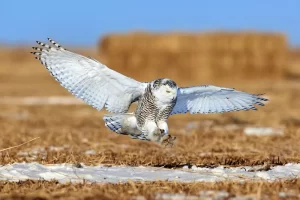
Characteristics of Snowy Owls
The snowy owl (Bubo scandiacus) is a striking and powerful bird of prey, renowned for its unique appearance, adaptation to extreme cold climates, and its association with the Arctic regions.
Size and Shape: Snowy owls are large, powerful birds, measuring 20 to 28 inches (50 to 70 cm) in length with a wingspan of 4.5 to 5 feet (1.4 to 1.5 meters). They have a stocky body with a rounded head, and their appearance gives off an impression of strength and elegance.
Feathers and Plumage: The snowy owl’s most distinctive feature is its white feathers, which help it blend seamlessly into the snowy environment. Adult males are almost entirely white with only a few dark spots, while females and younger owls have more pronounced dark markings across their bodies. Their feathers are dense, soft, and covered with a layer of down, offering excellent insulation against the cold. The wings and tail are broad and long, which aids in silent flight.
Eyes: The eyes of a snowy owl are large, round, and yellow, which provides them with excellent vision, crucial for spotting prey over long distances.
Beak and Talons: Their beaks are curved and sharp, ideal for tearing into their prey. Their powerful talons, used for gripping and subduing prey, are also large and strong.
Snowy Owl Habitat and Range
Snowy Owl Habitat
Snowy owls are primarily found in open, treeless areas. Their habitat is defined by its cold, often extreme, conditions, with tundra and Arctic landscapes being their natural home.
1. Tundra and Arctic Regions
Snowy owls are most commonly associated with the Arctic tundra, where vast, flat expanses of snow and ice dominate the landscape. These regions offer a sparse, open environment ideal for hunting prey and avoiding predators.
The tundra provides minimal shelter, but the snowy owl’s white feathers blend perfectly with the snow, allowing for camouflage. This is especially useful during hunting and when avoiding potential threats.
2. Open Grasslands and Prairies
Although they are Arctic dwellers, snowy owls are also known to inhabit open grasslands and prairies in colder climates. During winter, they may migrate to these regions, seeking open areas that are devoid of dense vegetation, which enhances their hunting success.
3. Coastal Areas
Snowy owls can also be found along coastal areas, particularly in the northern parts of North America, where the habitat transitions from tundra to coastal wetlands and shorelines. The proximity to these ecosystems provides additional hunting grounds, as coastal areas support a variety of small mammals and birds that serve as prey.
4. Nesting Locations
When it comes to nesting, snowy owls typically choose elevated ground such as cliffs, ridges, or even large mounds of earth or snow. They do not build nests but prefer to lay their eggs in depressions in the ground or under some form of natural cover, like low vegetation or a rock overhang.
Snowy Owl Range
The range of the snowy owl spans a vast area, stretching from the Arctic regions of North America and Eurasia all the way south into more temperate zones during winter.
1. Breeding Range
North America: Snowy owls breed in the Arctic regions of Canada, Alaska, and parts of the northern United States. During the breeding season (spring and early summer), they are found in these colder, more remote areas, where they hunt lemmings and other small mammals.
Eurasia: In Eurasia, snowy owls breed in the Arctic regions of Scandinavia, Russia, and parts of Siberia. These regions offer similar environmental conditions to their North American counterparts, with vast stretches of tundra and cold climates.
2. Migration and Winter Range
As the weather warms and food becomes scarcer in the far north, snowy owls migrate southward in search of food. Their migration is irregular and based primarily on the availability of prey, meaning that the extent of their migration can vary from year to year.
North America: Snowy owls can be found as far south as the northern United States, including parts of the Great Plains, Midwest, and even the northeastern United States, such as New York, Vermont, and New Hampshire.
Eurasia: In Eurasia, snowy owls can be seen migrating into northern Europe, including areas of the United Kingdom, and as far south as parts of Central Europe.
3. Winter Range
While snowy owls do not have a fixed winter range, some individuals can be found in temperate regions during harsh winter months. This winter range expansion is usually driven by scarcity of food in their northern breeding grounds. In North America, this phenomenon is often called an “irruption,” where large numbers of snowy owls move further south than usual.
4. Factors Influencing Range
Food Availability: The primary driver behind the snowy owl’s migration is the availability of prey. During years of low rodent populations in the Arctic, snowy owls will move southward in search of more abundant food sources.
Weather Patterns: The severity of winter also influences the range of snowy owls. In particularly harsh years, they may venture further south, and in milder winters, they may remain closer to their breeding grounds.
Snowy Owl Diet and Lifespan
Snowy Owl Diet
Primary Diet: Snowy Owls are carnivorous birds of prey, meaning they rely on other animals for food. Their diet consists mostly of small mammals, birds, and, in some cases, fish. The main food sources for Snowy Owls are:
- Lemmings: Lemmings, particularly the tundra species, are a staple food in the Snowy Owl’s diet. These small, burrowing rodents are abundant in the Arctic and make up a significant portion of the owl’s intake, especially during the winter months when they are more accessible.
- Other Rodents: In addition to lemmings, Snowy Owls also prey on other small rodents like voles, rats, and squirrels. These animals provide the necessary energy for the owl to survive in cold climates.
- Birds: Snowy Owls may also hunt birds such as ptarmigans, geese, and smaller songbirds. They can capture these prey items in flight or on the ground, using their strong talons to grasp and kill them.
- Fish: On occasion, Snowy Owls have been observed eating fish, although this is less common than other food sources. Fish might be caught near water sources, especially during the breeding season.
Hunting Methods: Snowy Owls are skilled hunters, utilizing their excellent vision and keen sense of hearing to locate prey. They can hunt during both day and night, although they are primarily nocturnal. Their hunting strategies include:
- Hunting from a perch: The owl often hunts from a high perch, such as a post, rock, or tree, where it can spot prey from a great distance.
- Ground hunting: They are also known to hunt on the ground, stalking their prey and using stealth to get close before pouncing.
- Flying silently: Snowy Owls have specialized feathers that allow them to fly silently. This quiet flight helps them sneak up on prey without being noticed.
Snowy Owl Lifespan
Wild Lifespan: The lifespan of a Snowy Owl in the wild can vary significantly based on factors such as food availability, predation, and environmental conditions. On average, Snowy Owls can live to be around 10 years old in the wild, although many do not survive to reach this age. Mortality rates are high among young owls, especially during the first year of life.
- Juvenile Mortality: Snowy Owl chicks face a high risk of mortality due to harsh environmental conditions and a lack of experience in hunting. Many owls do not survive their first winter, particularly in years when prey is scarce.
- Adult Mortality: Adult Snowy Owls generally have a better chance of survival, although they can still fall prey to predators or suffer from food shortages. Humans, in particular, pose a threat to their survival, through habitat destruction or hunting in some regions.
Captive Lifespan: In captivity, Snowy Owls tend to live longer due to the absence of natural predators and more consistent access to food. Some captive Snowy Owls have been known to live up to 28 years, although this is much longer than they typically live in the wild.
Behavior and Hunting
Hunting Techniques: Snowy owls are primarily diurnal, meaning they hunt during the day, which is uncommon among most owl species. They rely on their excellent eyesight and hearing to spot prey, often from high perches or while flying silently over the snow-covered ground. Their diet mainly consists of small mammals, such as lemmings, voles, and rabbits, though they may also hunt birds. They are capable of hunting in the dead of night if necessary, but daylight hunting is their typical pattern.
Flight: These owls are known for their silent flight, thanks to the special structure of their wings. Their wing feathers have velvety edges that help reduce sound, making them stealthy hunters. They are capable of long flights in search of food, but prefer to remain in an area with a stable supply of prey.
Sounds: Snowy owls make various sounds including an alarm call resembling ‘krek-krek’, softer mewling sounds from females (‘pyee-pyee’), and a deep ‘gahw’ song. They may also produce clicking noises when threatened by clapping their beaks (or possibly clicking their tongues).
Do Snowy Owls Eat Arctic Foxes?
Snowy owls do not typically prey on Arctic foxes. However, they can occasionally prey on juvenile or small Arctic foxes, especially when other prey is scarce. The main diet of Snowy Owls consists of lemmings and other small rodents, which are their preferred and most abundant food sources. In some instances, adult Snowy Owls may defend themselves against smaller Arctic foxes by attacking them if necessary. Nonetheless, the primary interaction between Snowy Owls and Arctic foxes is often one where the owls are protecting their nests from predation by the foxes rather than actively hunting them for food.
The Snowy Owl Pictures
10 Interesting Facts About Snowy Owls
Here are 10 interesting facts about the snowy owls:
1. Snowy owls can reach flight speeds of up to 50 mph (80 km/h).
2. A snowy owl’s resting heart rate is around 200 beats per minute, but it can increase to 300 beats per minute when actively hunting.
3. Snowy owls eat their prey whole, swallowing animals up to one-third of their size. Their stomach compacts the indigestible parts into boluses, which they then excrete.
4. These owls are ground nesters, making nests in burrows, excavations, or depressions. They sometimes nest under dense foliage or deep snow for protection from predators.
5. Snowy owls often mate for life, maintaining lifelong monogamous relationships.
6. They can rotate their heads 270 degrees in either direction due to having an extra neck vertebra. This flexible neck allows them to view their surroundings without moving their eyes.
7. Female snowy owls can be up to 20% larger than their male counterparts. This is because they require more energy reserves to survive the long winter months and for reproduction. Females can have wingspans two feet larger than males, increasing their weight by up to 6 pounds.
8. Snowy owls possess a special adaptation that allows them to hunt in darkness. Bristles around their eyes act as acoustic antennae, bouncing sound waves to their ears. They also have excellent distant vision and a keen sense of hearing that helps them hunt prey, even if it is 8 inches under the snow. Their eyes can see in low light because of tapetum lucidum, which improves night vision.
9. The snowy owl is a top carnivore in its ecosystem, preying on rodents like lemmings and voles, as well as arctic hares and ducks14.
10. Snowy owls are one of the heaviest owl species in North America because they need a large body mass and a hefty amount of feathers for insulation from arctic temperatures. They weigh 3.25 to 6.5 pounds on average.
You May Also Like
Snowy owls are magnificent birds known for their stunning all-white plumage. These birds are typically found in the Arctic tundra, where they hunt for prey to survive. While snowy owls …
Snowy owls, also known as Bubo scandiacus, are one of the largest and most iconic birds of prey in the world. These magnificent creatures are renowned for their striking appearance, …
The Snowy Owl, also known as the Arctic Owl or Great White Owl, is a majestic bird of prey that inhabits the northern regions of North America and Eurasia. One …
The Snowy Owl (Bubo scandiacus), with its striking white plumage and piercing yellow eyes, is a magnificent bird of prey that captures the imagination of bird enthusiasts and nature lovers …

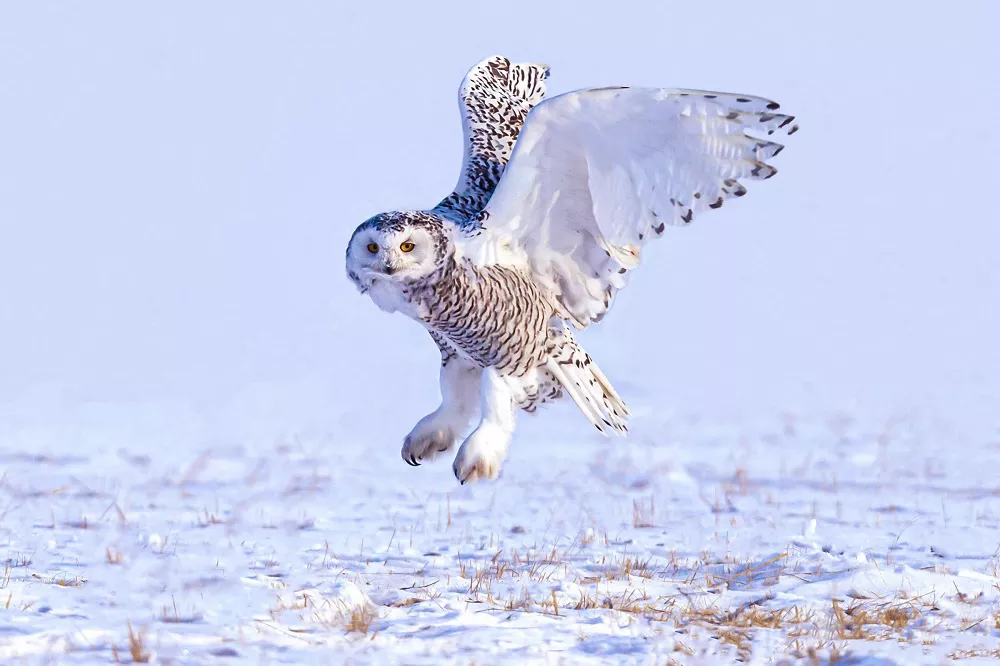
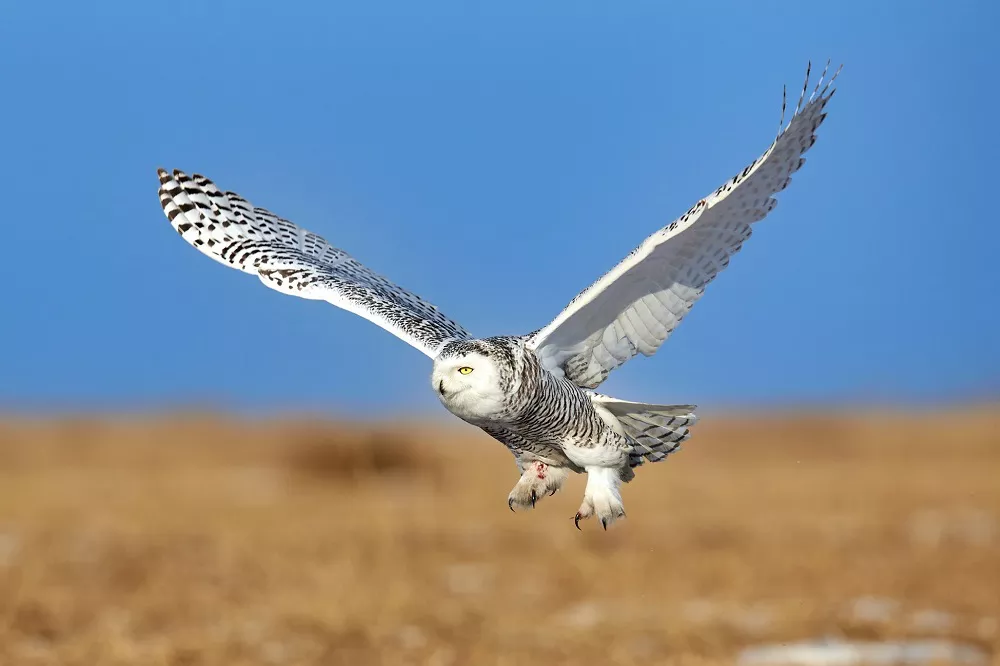
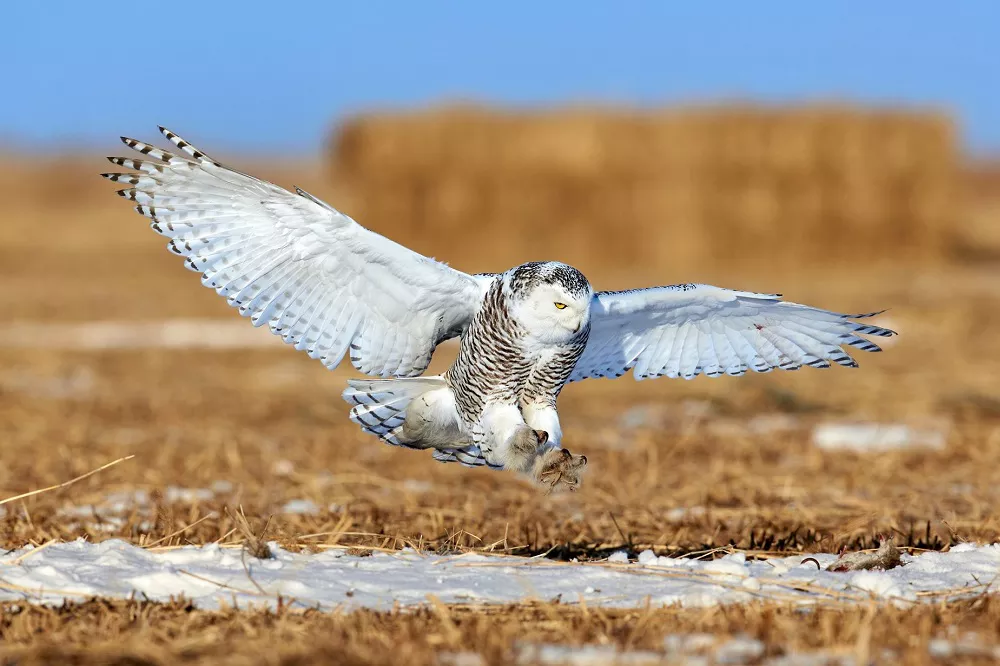
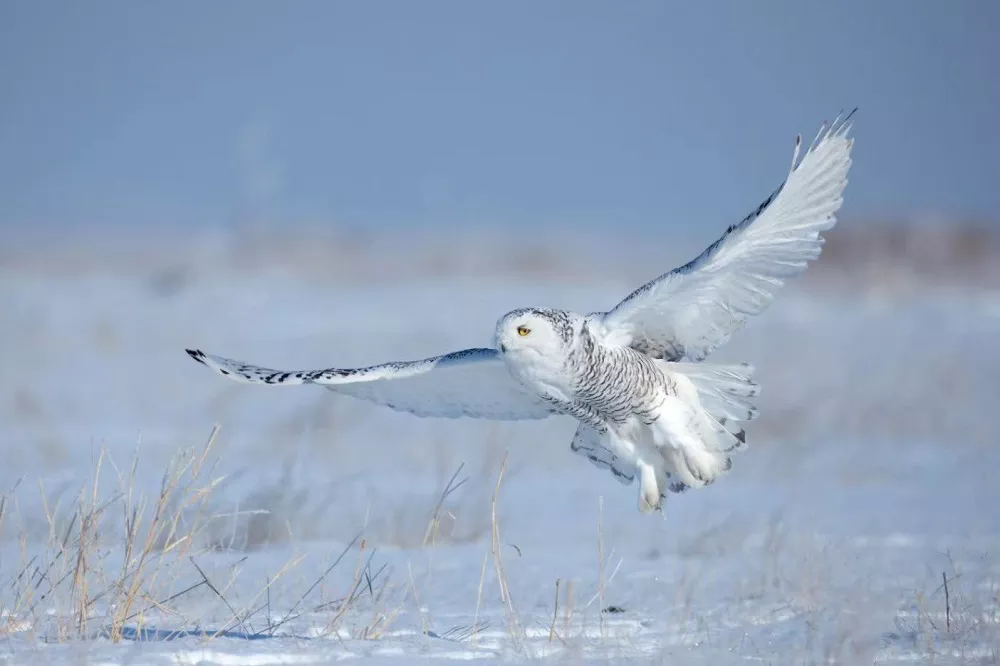
 Facebook
Facebook  Instagram
Instagram  Youtube
Youtube 